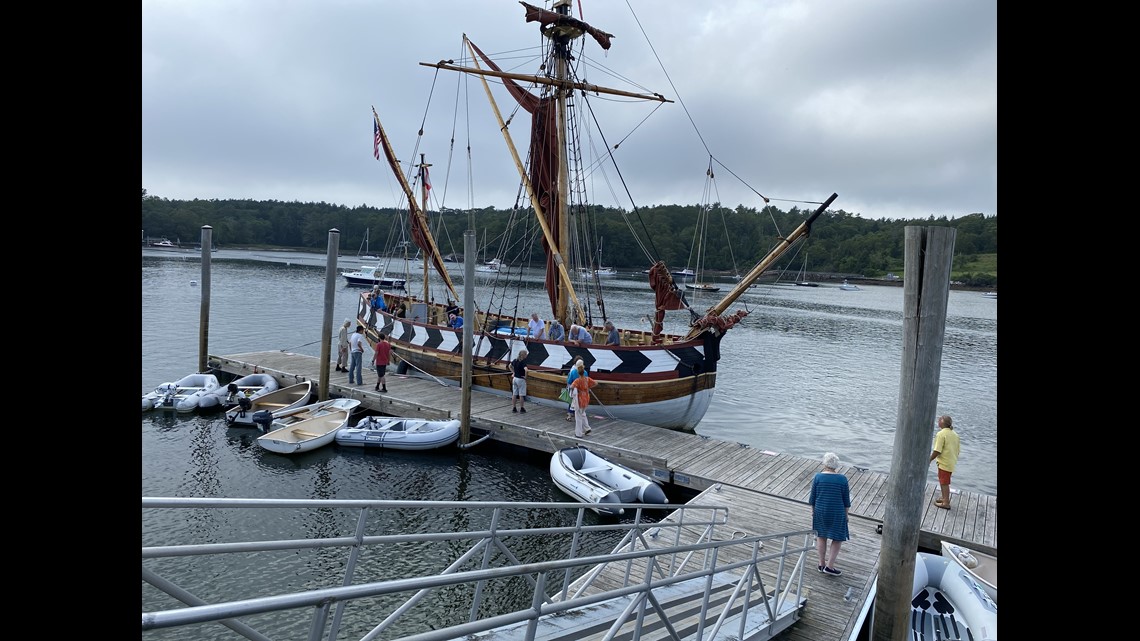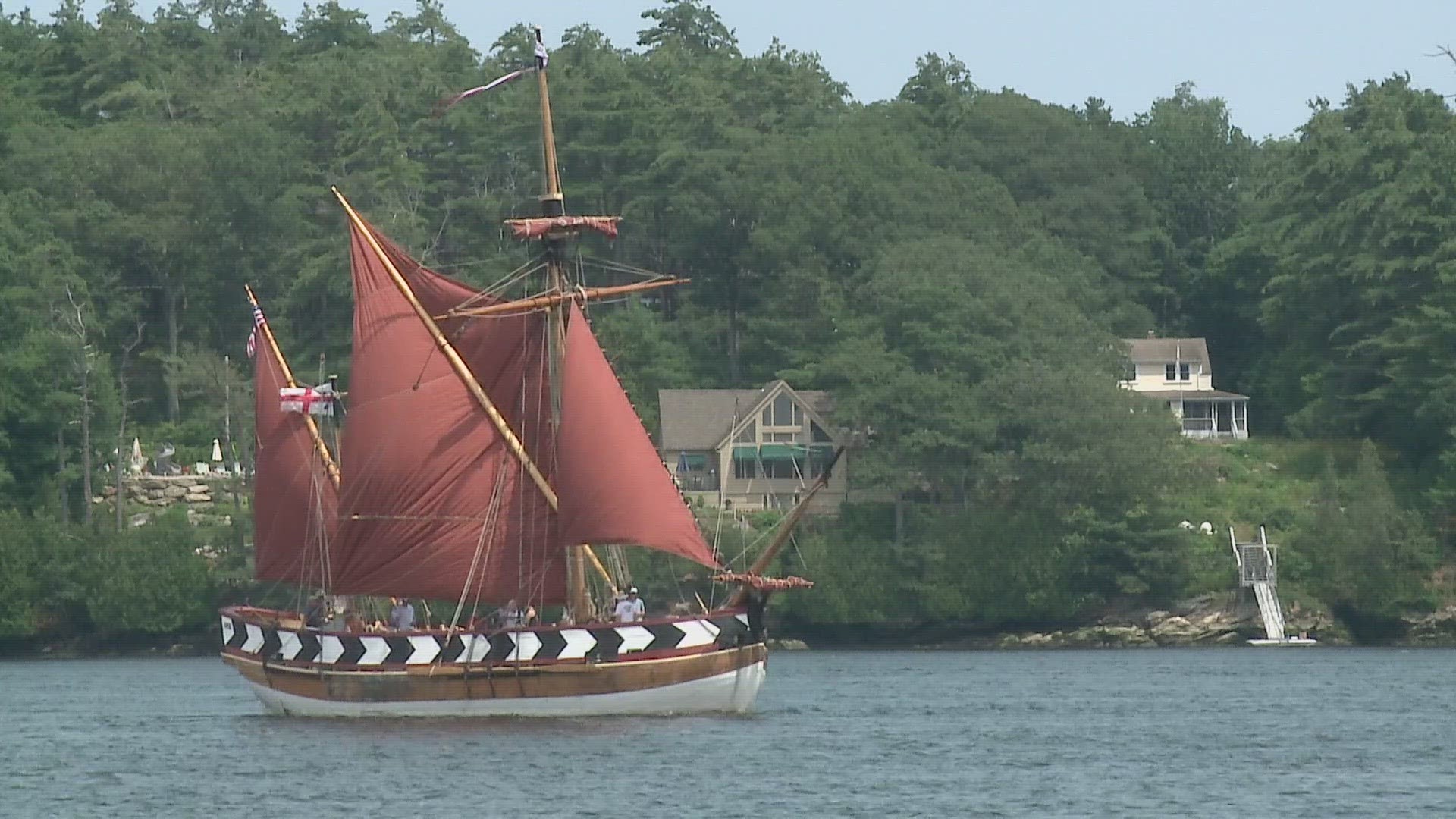BATH, Maine — In a city known for building big steel ships, a small wooden one is getting attention. The Virginia is a little over 50 feet in length and looks like no other vessel seen in New England waters.
There’s a reason for that.
Virginia is a replica of a ship built in 1607, along the shore of the Kennebec River, by the Popham Colony, an attempt to establish the first English settlement in New England. The Virginia was the first English ship built in North America. The volunteer project to create a modern version of that vessel is named “Maine’s First Ship.”
From idea to research to launch, building the new Virginia took about 20 years and a tremendous amount of work. She was launched into the Kennebec in June of 2022, but it has taken another year to make her rigged and ready to sail.
“I think people thought the transition would be about 24 hours, put the boat in the water, and then we begin,” Kirstie Truluck, executive director of Maine’s First Ship, said. “I think we learned the transition is a multi-year process. “
That said, the vessel that now floats at dockside in Bath has already made two trips to other ports and is actively training the all-volunteer crew members. She sails to Pemaquid Harbor for a historic Pemaquid event and sailed to Boothbay Harbor in June to be part of Windjammer Days.


Looking dramatically different from any of the traditional schooners in that event, Truluck says Virginia got a lot of attention.
Truluck said, “I was actually surprised during the parade of sail, and had people all around me oohing and aahing, saying, 'What is that ship?' Because, all those beautiful schooners with their white sails in the fog, and here comes Virginia with tanbark (brown) sails through the fog, and people were going crazy for her. Children said, 'Oh, it’s a pirate ship!'”
Virginia isn’t meant to emulate a pirate ship, of course. She actually was built to both celebrate those brave, early Maine settlers and to teach 21st-century children and adults about those parts of Maine’s past.
“[The goal] was always to put students on board and teach them the history, this place-based history, and also to teach them about sailing ships in this city of ships,” Truluck explained.
That part of the mission — about making Bath as the City of Ships — has already begun. The Virginia and her displays on land are already drawing visitors to Bath’s waterfront.
“Our visitor numbers are as strong now that she is in the water than when we were building, maybe even stronger,” said Jeremy Blakelock, president of the board of Maine’s First Ship and one of the volunteer coordinators of the building work.
“This is a very nice attraction. It brings people in the door, gets them exposed to the history and the stories, not just the Popham Colony, but shipbuilding on the Kennebec," Blakelock said.
Truluck says part of their mission is to be “ambassadors for the city of Bath.”
For the moment, however, the visitors can only watch from the dock. Virginia is still awaiting Coast Guard certification, so no passengers can be on board. The vessel can sail only with the volunteer crew. Truluck said it will likely be 2024 before they can fully begin plans to carry student and adult passengers.
In the meantime, there is more training to be done, more work on historic exhibits, and, of course, fundraising. Even all volunteer groups require funding, especially when they have a ship and a waterfront building to care for.
For those volunteers who do get to sail, however, there have already been glimpses of the lessons Virginia will be able to teach.
Blakelock, who was on the crew for the sail past outer islands from Boothbay Harbor, said when they shut off the engine (required by regulation) and just sailed, it was a great experience.
“When we were sailing, it was surrounded by fog, couldn’t see land, couldn’t see any other boats, and really couldn’t hear any modern things. It was really evocative of what they would have been experiencing, those people from England," Blakelock said.

